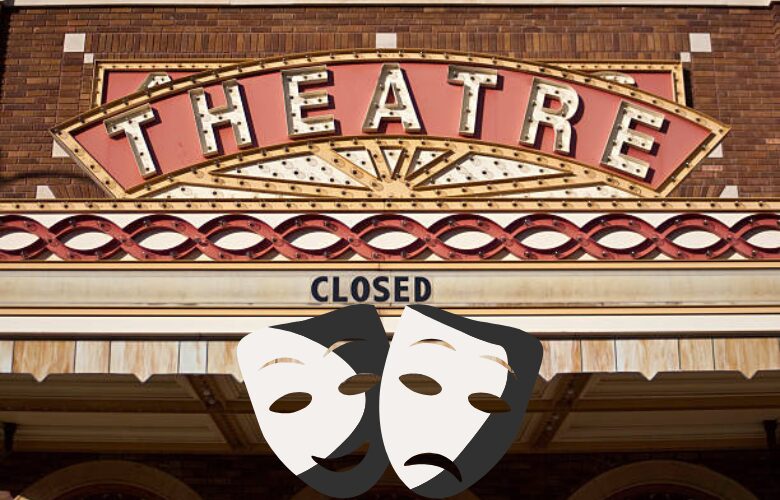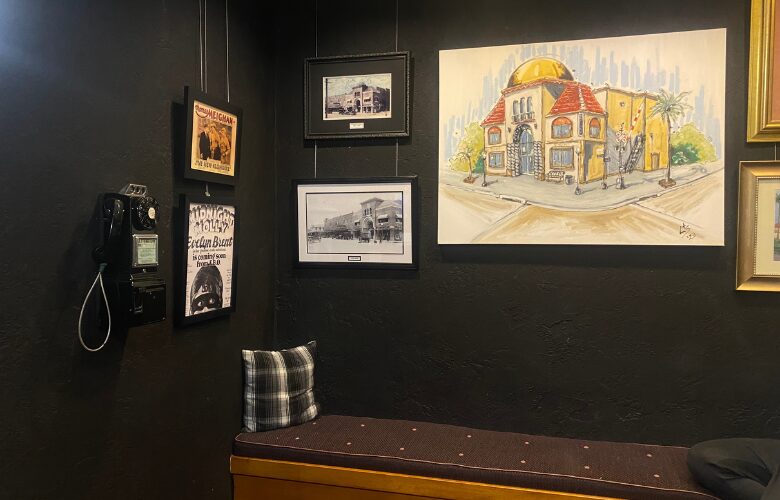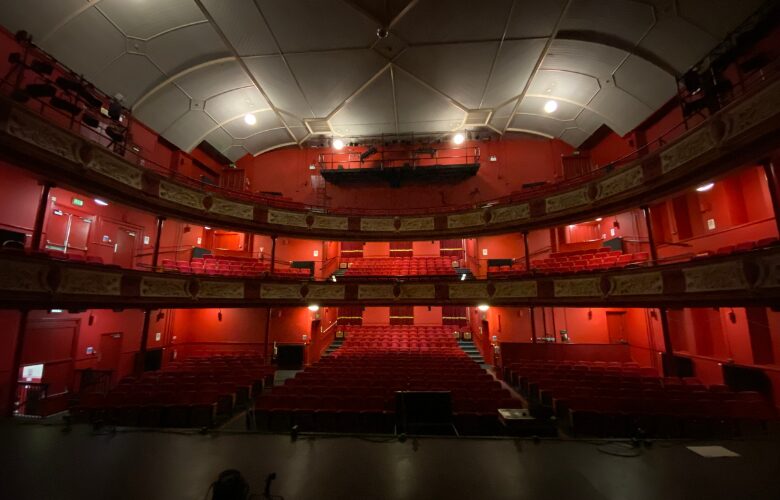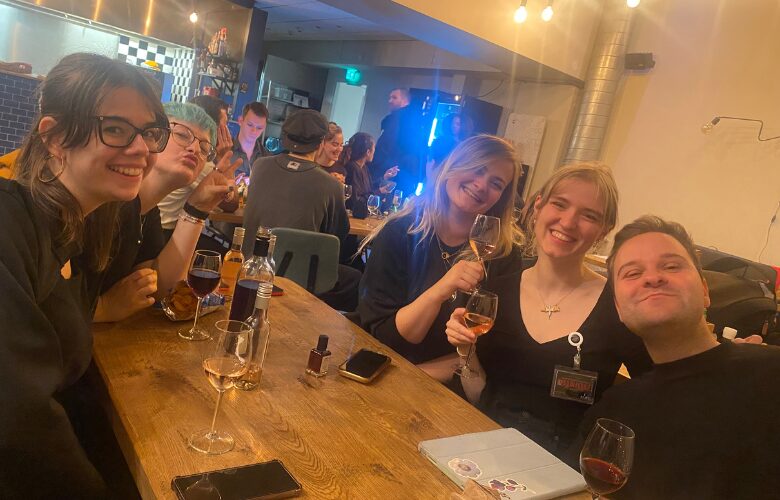Community Theatres May Not Last: How You Can Support

Community theatres may not last and it breaks my heart to say that. As someone who frequently visited and got my own start in community theatre, I love to help support them when I can. However, working in professional theatre leaves little time for this now, but while visiting some relatives of mine I agreed to go to a community theatre play. By the time we left one thing was clear: Community theatres may not last without massive support from its audience members, pre-professionals in the industry and financial backing.
I was excited to go to the play and dressed up as I grew up believing that’s what you do for theatre. The neon sign and lit up boards highlighting their upcoming shows was nostalgic and I felt almost transported back to being a child getting to experience it all again for the first time. Due to long hours of working in the industry, and being on the road so often, it has been rare for me to help support local theatre as much as I would have liked the past few years. When I entered the theatre, the lobby felt refreshing with popcorn in small buckets and wine glasses being filled before being handed off. Playbills with the show on the cover sat in a basket for audience members to take. This was when I began to notice some of the differences between professional versus community theatre.

After reaching for a Playbill for myself, I looked up and saw the entryway to the front of the house (where the audience sits to watch the show). From the entryway, you could see the stage. I naturally expected a smaller stage but it looked almost cramped with the full black curtain drawn. As we all walked to our seats, I looked around for all the technical aspects (that no one else would notice of course).

The speakers were outdated by at least 50 years and not pointed at any particular angle. This left multiple sections of the audience barely able to hear what was being said by the actors. Some of the lights had recently been replaced as I saw the theatre had 6 moving lights and at least 2 new LEDs. When the play began, the house lights dimmed but didn’t go completely black. In professional theatre this would have meant it was a relaxed performance (softer sound cues, audience able to move around freely, etc.) or there would be something significantly different about the play tonight such as interpretation (sign language). As the play went on, I didn’t see anything that indicated it was relaxed or interpreted. What I did see, and what several other patrons noticed, was missed sound cues, sloppy lighting, actors having their backs to the audience, and a highly flawed show that they paid money to see.
Standing outside after the show, I was again reminded of getting to experience this all for the first time. The actors came out of the stage door, most still in costume. Their friends and family ran to greet them and take pictures of their successful night, because to these actors it was overall a success. To these actors, they had just finished performing in front of a nearly sold-out house and wanted to celebrate. To the crew, they didn’t call a show stop and no one was injured so it was a successful night for them as well. I could very well complain about everything that was missed and wrong about the quality of the show, but in the end that is what helps make it community theatre. It’s there not to be the best quality you will ever see, but to get to experience everything magical about theatre for the first time.

Overall, it’s true that community theatres may not last without the support of the local community. That is what local theatre has always been about, coming together as a community and supporting performing arts. Universities can aid by giving local theatres any equipment they aren’t using and providing students who are learning the trade to help run tech of their shows. Carpenters and general handymen are not hard to come by and are often happy to help volunteer part of their time and left over supplies for things like sets and props. Most of all, audience members must remember that their community theatre helps their community more than anything else. Here are some of the ways you can help out:
- Attend Performances –The simplest and most impactful way to support community theatre is to attend their shows. Buy tickets, bring friends, and spread the word about upcoming productions.
- Volunteer Your Time – Community theatres often rely on volunteers to assist with tasks like set construction, costume design, ushering, or managing concessions.
- Make a Donation – If you can, contribute financially to help cover operational costs, production expenses, and outreach programs.
- Sponsor a Show or a Season –Local businesses and individuals can sponsor productions or entire seasons to help with costs while gaining visibility in the community.
- Join the Board or Committees – Many community theatres are run by boards of directors or committees. Offering your expertise or insights can help shape their future.
- Promote on Social Media – Share posts about performances, auditions, and events. Word-of-mouth and online promotion are invaluable for building an audience.
- Participate in Fundraising Events – Attend or contribute to fundraising events like galas, auctions, or benefit performances. Your participation helps ensure the theatre’s sustainability.
- Advertise in Playbills – If you own a business or know someone who does, purchasing ad space in a theatre’s program is a great way to support and promote locally.
- Donate Supplies or Services – Theatres often need materials for sets, costumes, or props. If you have items or services (like printing, photography, or catering) to offer, they can be a huge help.
- Encourage Youth Involvement – Encourage children and teens to participate in youth theatre programs or workshops. It supports the next generation of performers and enthusiasts.
- Provide Housing or Meals for Visiting Artists – If the theatre brings in guest artists, offering housing or meals can be a meaningful way to support their efforts.
- Advocate for the Arts – Speak up for funding and support for the arts at local government meetings or through petitions to ensure community theatres thrive.
- Join as a Member – Many theatres have membership programs that offer perks while providing reliable financial support.
- Participate in Productions – If you have an interest in acting, directing, or stage management, consider auditioning or signing up for behind-the-scenes roles.
- Offer Post-Show Support– Host or sponsor cast parties or help with clean-up after a production ends.
- Build Partnerships – Collaborate with local schools, organizations, or other artistic groups to expand the theatre’s reach and impact.
All photos by Drew Janine.
Editor's Note: At StageLync, an international platform for the performing arts, we celebrate the diversity of our writers' backgrounds. We recognize and support their choice to use either American or British English in their articles, respecting their individual preferences and origins. This policy allows us to embrace a wide range of linguistic expressions, enriching our content and reflecting the global nature of our community.
🎧 Join us on the StageLync Podcast for inspiring stories from the world of performing arts! Tune in to hear from the creative minds who bring magic to life, both onstage and behind the scenes. 🎙️ 👉 Listen now!
